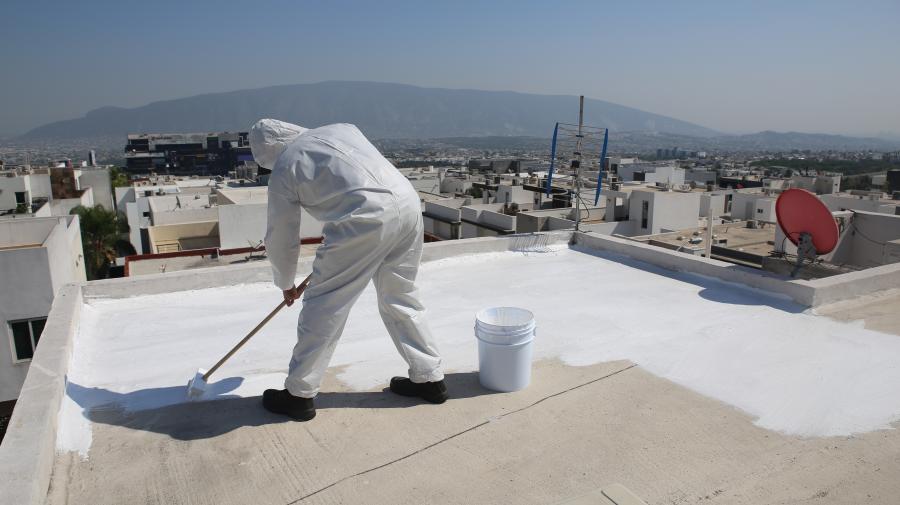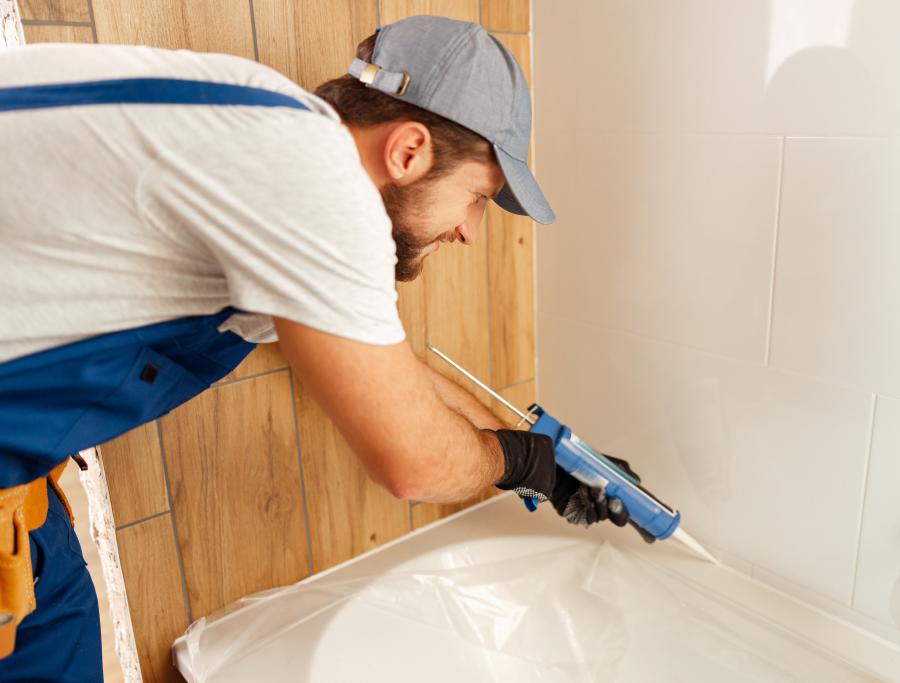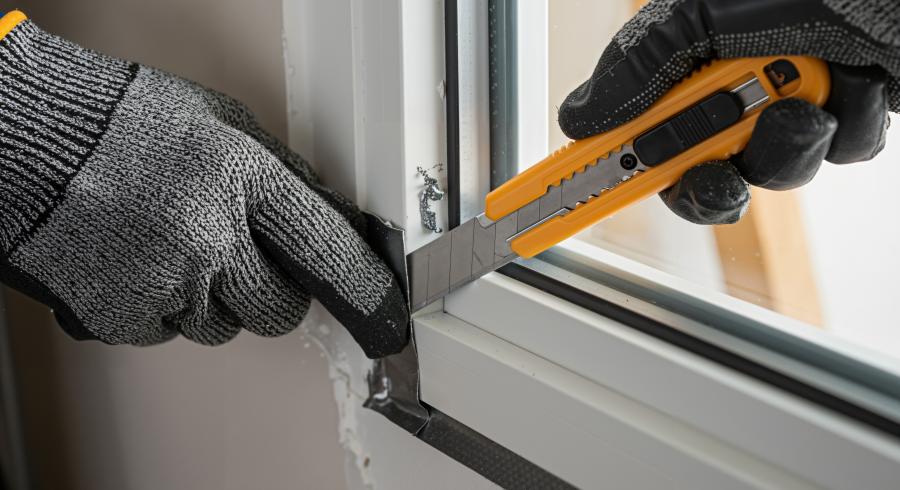When Standard Sealants Fail, High-Temp Excels
Picture this: You’ve just sealed an exhaust manifold with standard caulk. Within minutes of starting the engine, the sealant begins to bubble and crack. What went wrong?
In environments like engine bays, exhaust systems, and industrial ovens, standard sealants simply cannot survive. These extreme heat conditions demand specialized solutions. When your project involves temperatures that would destroy ordinary materials, you need a sealant specifically engineered to maintain its integrity.
This comprehensive guide will walk you through the world of high-temperature silicone. We’ll explain the technology behind these specialized products, break down the different types and what their colors mean, and show you how to choose the right sealant for a permanent, leak-proof seal that can truly take the heat.
1. What Makes a Silicone “High-Temperature”?
Not all silicones are created equal. Understanding the fundamental difference between standard and high-temperature formulations is your first step toward selecting the right product.
The Science Behind Heat Resistance
High-temperature silicones are formulated with special additives and stabilizers that allow the polymer to remain stable and flexible at elevated temperatures. These additives, often including iron oxides and other heat-resistant compounds, prevent the silicone from degrading into a brittle or gummy state.
Standard silicones typically begin breaking down around 100°C (212°F). In contrast, high-temperature formulations maintain their structural integrity well beyond 200°C (392°F), with premium products rated for continuous service at 300°C (572°F) or higher.
Key Properties That Matter
When evaluating high-temperature silicones, look for these critical performance characteristics:
- Extreme Temperature Resistance: The ability to withstand both the maximum temperature and thermal cycling without degradation
- Permanent Flexibility: Maintains elasticity even after repeated heating and cooling cycles
- Excellent Adhesion to Metal: Strong bonding to steel, aluminum, cast iron, and other metals commonly found in high-heat applications
- Resistance to Oils and Chemicals: Many formulations offer protection against automotive fluids, coolants, and industrial chemicals
- Vibration Resistance: Maintains seal integrity in equipment subject to constant movement
These properties work together to create a seal that won’t just survive extreme heat—it will thrive in it.
2. Understanding the “Color Code”: Red vs. Black vs. Other High-Temp Sealants
One of the most common questions professionals ask is: “What’s the difference between red and black high-temperature silicone?” The color isn’t just aesthetic. It often indicates specific formulation characteristics designed for particular applications.
Red High-Temp Silicone: The Industry Standard
Red has become the most recognized color for high-temperature applications, and for good reason.
Typical Temperature Rating: Most red formulations handle continuous service up to 260°C (500°F) with intermittent exposure to 315°C (600°F) or higher.
Best Applications: Red high-temp silicone excels in general high-heat gasketing applications. Use it for thermostat housings, valve covers, oil pans, and any application requiring a formed-in-place gasket that will face significant heat.
Chemical Compatibility: Red formulations typically offer good resistance to coolants and moderate resistance to oils, making them versatile for most automotive and industrial applications.
Black High-Temp Silicone: Superior Oil Resistance
Black high-temperature silicone isn’t just red silicone with different pigment. The formulation is specifically optimized for environments with heavy oil exposure.
Key Feature: Enhanced oil resistance that exceeds what red formulations typically provide.
Best Applications: Oil pans, transmission pans, differential covers, and any sealed component that will be constantly exposed to petroleum-based fluids. The superior oil resistance prevents the sealant from swelling or degrading over time.
Temperature Performance: Similar to red formulations, typically rated for 260-315°C (500-600°F) range.
Gray, Copper & Specialty Colors
Other colors in high-temperature silicones often indicate specialized formulations designed to meet specific Original Equipment Manufacturer (OEM) requirements.
Gray Formulations: Often designed for applications requiring specific torque specifications or compatibility with particular substrate materials.
Copper-Infused Sealants: Some specialty formulations include copper particles to enhance thermal conductivity and improve adhesion to certain metal surfaces, particularly in high-torque, high-vibration applications.
When to Choose Specialty Colors: If you’re working on equipment that originally used a specific color sealant, matching that formulation often ensures the best compatibility and performance.
3. Key Applications: Where to Use High-Heat Caulk
Understanding where high-temperature sealants excel helps you identify the right solution for your specific project. Let’s explore the major application categories.
Automotive Applications
The automotive sector represents one of the largest markets for high-temperature silicones. Engines generate intense heat, creating demanding conditions for any sealing material.
Formed-in-Place Gaskets: Replace traditional cut gaskets with liquid silicone that conforms perfectly to mating surfaces. This approach works excellently for valve covers, oil pans, timing covers, and transmission pans.
Exhaust System Sealing: Seal exhaust manifold connections, repair cracked exhaust pipes, and create gas-tight joints in exhaust systems. The extreme temperatures in exhaust applications (often exceeding 400°C) demand premium high-temp formulations.
Engine Component Assembly: Use during assembly or repair of water pumps, thermostat housings, intake manifolds, and any component where heat and fluids combine to create challenging sealing conditions.
Industrial Applications
Industrial environments often present even more extreme conditions than automotive applications.
Sealing Flanges: Create reliable seals on pipe flanges, equipment housings, and access panels that face high temperatures during operation.
Industrial Ovens and Furnaces: Seal doors, observation ports, and penetrations in industrial heating equipment. Ensure the sealant’s continuous temperature rating matches or exceeds the maximum operating temperature.
High-Temperature Ductwork: Seal joints in HVAC systems, industrial ventilation, and process air handling systems where temperatures exceed the capabilities of standard sealants.
Machinery Sealing: Protect critical equipment by sealing housings, bearing assemblies, and gearbox covers on machinery that operates at elevated temperatures.
Home & Fireplace Applications
Don’t overlook residential applications where high-temperature sealants provide essential performance.
Fireplace Installation: Seal fireplace inserts, chimney connections, and fireplace surrounds. Note that this is different from firestop caulk, which prevents fire spread through penetrations. High-temp sealants handle heat exposure but don’t provide fire-barrier protection.
Stovepipe Connections: Create secure, heat-resistant seals on wood stove and pellet stove installations.
BBQ and Smoker Repair: Repair cracks in outdoor cooking equipment and seal joints that face intense heat and weather exposure.
4. Buyer’s Guide: A Professional’s Checklist for High-Temp Sealants
Before selecting a high-temperature sealant, ask yourself these critical questions. Your answers will guide you toward the optimal product for your specific application.
Check the Temperature Rating
Not all “high-temperature” sealants offer the same level of performance. Examine both ratings carefully.
Continuous Service Temperature: This is the maximum temperature the sealant can handle during normal, extended operation without degradation. For most automotive applications, 260°C (500°F) continuous rating provides adequate protection.
Intermittent Temperature: This rating indicates the maximum short-term temperature exposure the sealant can withstand. Exhaust applications may experience intermittent temperatures of 315-400°C (600-750°F), requiring products rated accordingly.
Real-World Translation: If your application routinely reaches 250°C, select a sealant with a continuous rating of at least 300°C to provide a safety margin.
Confirm Chemical Resistance
Temperature isn’t the only challenge your sealant will face. Chemical exposure can compromise even heat-resistant formulations.
Oil and Fuel Exposure: If the sealed joint will contact motor oil, transmission fluid, gear oil, or fuel, verify the sealant offers specific oil resistance. Black formulations typically excel here.
Coolant Compatibility: Automotive cooling systems combine heat with ethylene glycol-based coolants. Ensure your sealant resists both thermal and chemical attack.
Industrial Chemicals: Manufacturing environments may expose sealants to solvents, process chemicals, or cleaning agents. Consult the technical data sheet to verify compatibility.
Sensor-Safe Formulations
Modern vehicles incorporate sensitive oxygen sensors and other electronic components in their exhaust systems. Some sealant formulations release volatiles during curing that can contaminate or damage these sensors.
Why It Matters: A non-sensor-safe sealant might create a perfect seal but trigger a check engine light or damage expensive sensors.
What to Look For: Product specifications should explicitly state “sensor-safe” or “oxygen sensor safe” if the sealant meets these requirements.
Curing Time and Application Window
High-temperature sealants typically use acetoxy cure systems, curing through moisture exposure. Understanding the timeline helps you plan your work.
Skin Formation Time: The time before a surface film forms, typically 8-15 minutes. You must complete tooling before the skin forms.
Full Cure Time: Complete curing usually takes 24 hours per 3mm of thickness. Thicker applications require longer curing times.
Before Heat Exposure: For optimal performance, allow the sealant to fully cure at room temperature before exposing it to operating temperatures. This ensures complete cross-linking and maximum strength.
5. Our Recommended Solution: The Professional’s Choice for Extreme Heat
After examining the technology, applications, and selection criteria, let’s look at a proven solution that meets professional standards for high-temperature sealing.
Introducing BoPin 770 High Temperature Silicone Sealant
BoPin 770 represents professional-grade engineering designed specifically for extreme temperature conditions. This acetoxy silicone formulation delivers the performance characteristics that demanding applications require.
Engineered for Extreme Environments
Temperature performance defines high-temp sealants, and BoPin 770 delivers where it counts:
- Continuous service rating: -40°C to +300°C (-40°F to +572°F)
- Maintains flexibility through thousands of thermal cycles
- Resists thermal shock from rapid temperature changes
Superior Adhesion & Flexibility
The sealant creates a permanent, flexible seal that adapts to thermal expansion and contraction:
- Excellent adhesion to metals, glass, and ceramic materials
- Over 400% elongation at break for superior movement capability
- ±20% movement accommodation prevents seal failure from thermal expansion
- Non-sagging formula allows vertical and overhead application without slumping
Formulated for Real-World Challenges
Beyond basic temperature resistance, BoPin 770 addresses the complete range of challenges you’ll encounter:
- Vibration resistant for applications on engines and machinery
- Chemical compatibility with coolants and moderate oil exposure
- Fast skin formation (8-15 minutes) speeds up your work
- Conforms to ISO 11600 G 20HM international standards
Available in Multiple Formulations
Choose the color that matches your specific application needs:
- Red: General-purpose high-temperature applications, ideal for most automotive and industrial uses
- Black: Enhanced oil resistance for applications with heavy petroleum product exposure
Professional Packaging Options
Available in convenient 280ml and 310ml cartridges compatible with standard sealant guns. Each cartridge provides approximately 11 linear meters of 5mm × 5mm beads, helping you estimate material requirements accurately.
Why Professionals Choose BoPin 770
When failure isn’t an option, you need a sealant backed by rigorous testing and real-world performance. BoPin 770 combines proven chemistry with consistent manufacturing quality to deliver the reliability your projects demand.
The product’s conformance to international standards provides assurance that it meets recognized performance benchmarks. More importantly, it performs day after day in the harshest conditions automotive shops, industrial facilities, and HVAC installations can create.
Ready to Ensure Your High-Heat Application Succeeds?
View BoPin 770 | Request a Sample or Quote
6. High-Temperature Sealant FAQ
Let’s address the most common questions professionals ask about high-temperature silicone sealants.
How long does high-temp silicone take to cure?
High-temperature silicone cures through moisture exposure, a process that happens from the outside in. Expect these general timeframes:
- Skin formation: 8-15 minutes under normal conditions (23°C, 50% relative humidity)
- Full cure rate: Approximately 2-3mm per 24 hours
- Deep applications: A 10mm bead might require 3-4 days for complete curing
Important consideration: Temperature and humidity significantly affect curing speed. Higher temperatures and humidity accelerate curing, while cold, dry conditions slow it down.
For best results, allow complete curing at room temperature before exposing the seal to operating temperatures. This patience ensures maximum cross-linking and optimal performance.
Is high-temp silicone a good adhesive?
This question highlights an important distinction. High-temperature silicone sealants do provide adhesion, but they’re fundamentally designed as sealants, not structural adhesives.
What they do well: High-temp silicones bond effectively to create gas-tight and fluid-tight seals. The adhesion strength is sufficient to keep mating surfaces together and resist pressures encountered in sealed applications.
What they don’t replace: For applications requiring significant structural strength or load-bearing capability, high-temperature silicone sealants aren’t the right choice. Dedicated high-temperature structural adhesives or mechanical fasteners would be more appropriate.
Practical application: In automotive gasketing, the sealant creates the seal and provides sufficient adhesion to hold gasket material in place during assembly. The mechanical clamping force from bolts provides the primary holding strength.
What’s the difference between “heat-resistant” and “fireproof” caulk?
This distinction is critical for safety, and the terms are definitely not interchangeable.
Heat-Resistant Sealants (like high-temperature silicones):
- Withstand elevated temperatures without degrading
- Maintain sealing properties in high-heat environments
- Cannot prevent fire spread or provide fire barrier protection
- Suitable for applications involving heat but not fire containment
Fireproof or Firestop Caulks:
- Specifically designed to prevent fire, smoke, and toxic gases from spreading through penetrations in fire-rated walls, floors, and ceilings
- Expand when exposed to fire to seal openings
- Meet specific fire-rating requirements (1-hour, 2-hour, etc.)
- Subject to different testing standards and certifications
When to use each: Use high-temperature silicone for applications involving operational heat (engines, ovens, stovepipes). Use firestop caulk for maintaining fire ratings in building penetrations (electrical conduits through fire walls, pipe penetrations in fire-rated floors).
Safety note: Never substitute one for the other. Using heat-resistant sealant where fire protection is required could have catastrophic consequences in a fire situation.
Can I use high-temp silicone on plastic materials?
The answer depends on the specific plastic and the application temperatures.
Challenges with plastics:
- Many plastics soften, melt, or degrade at temperatures well below the sealant’s rating
- Some plastics don’t provide good adhesion surfaces for silicone
- Plastic thermal expansion rates often differ significantly from the sealant’s capabilities
Where it works: High-temperature plastics like certain polyimides, PEEK, or glass-filled nylon can potentially work with high-temp silicones, but verify compatibility first.
Better alternatives: For most plastic applications, especially those involving moderate temperatures, neutral-cure silicones specifically formulated for plastic adhesion typically perform better.
How do I remove old high-temperature silicone?
Removing cured high-temperature silicone requires mechanical methods, as these sealants resist chemical degradation.
Best approach:
- Use a sharp blade or gasket scraper to carefully remove the bulk material
- Work slowly to avoid damaging the substrate
- For metal surfaces, abrasive pads or wire brushes can remove residual sealant
- Specialized gasket removers may soften some sealants, but results vary
- Final cleaning with isopropyl alcohol or acetone removes any remaining traces
Pro tip: When doing gasket replacements, complete removal of old sealant is essential. Even thin residues can prevent the new sealant from achieving optimal adhesion.
Conclusion: The Right Sealant for the Toughest Jobs
The success of any high-heat application depends entirely on choosing a sealant specifically formulated for your temperature and chemical environment. Standard sealants will fail quickly and catastrophically when exposed to conditions beyond their capabilities.
By understanding the technology behind high-temperature silicones, recognizing what different formulations offer, and carefully evaluating your specific requirements, you can select the right product with confidence.
Key Takeaways
- Temperature ratings matter: Match continuous and intermittent ratings to your actual operating conditions
- Color indicates formulation: Red for general use, black for oil resistance, specialty colors for specific requirements
- Application dictates selection: Automotive, industrial, and residential applications have different demands
- Quality makes the difference: Professional-grade products like BoPin 770 deliver consistent, reliable performance
Your Next Steps
Don’t risk failure in your critical high-heat projects. Trust the proven performance of professional-grade silicone sealants specifically engineered for extreme conditions.
Need expert guidance for your specific application? Our technical team can help you select the optimal solution for your unique requirements. Whether you’re sealing an engine, industrial equipment, or high-temperature HVAC systems, we’ll ensure you have the right product for permanent, reliable results.
Contact our technical experts for project-specific advice or explore our complete range of high-temperature sealing solutions.
Browse All High-Temperature Products
BoPin Construction Chemicals – Professional solutions for extreme conditions. When standard products fail, BoPin delivers.




